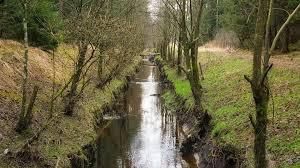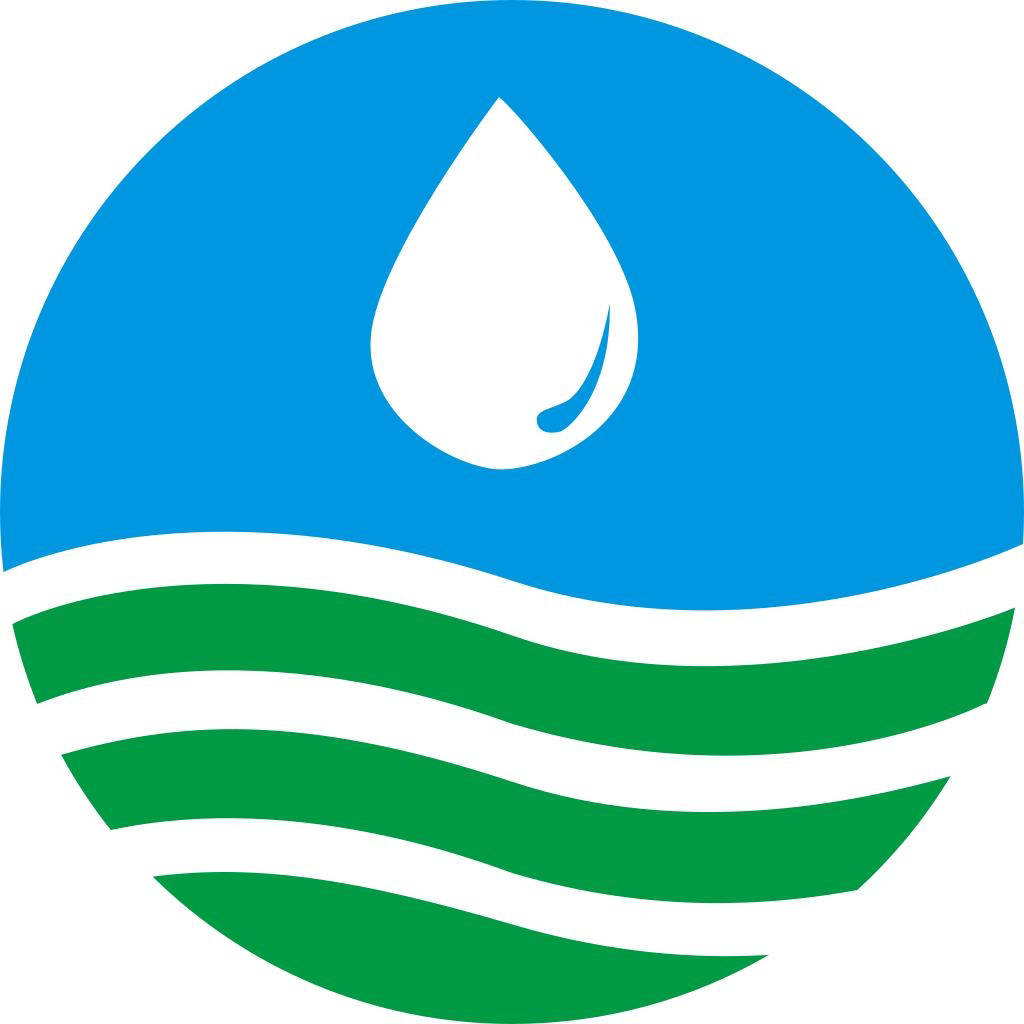what is drainage system - Let's Crack It
what is drainage system:

The term drainage describes us that the river system of an area or street or village.
Here , we noticed that small streams flowing from different directions come together to form the main main rivers, which ultimately drains into a too large water bodies such as lake or a sea or an ocean.
The area drained by some single rivers systems is called drainage basin.
A closed observation on a maps will be indicated that any elevated areas, such as mountains or an upland ; can be seperates by the two drainage basins. Such an upland is known as a water divide.
The drainage systems of India are control by the broad relief features of the subcontinents.
Accordingly , some of the Indian rivers are just divided into two major groups:
● the Himalayan rivers
● the peninsular rivers.

Apart from the originating from the two major graphically regions of the India, the Himalayan and the Peninsular rivers are just different from each other in many of the ways. Most of the Himalayan rivers are just perennial.
It means that they had some water throughout the years or a months.
These rivers receive some water from rain as well as from melted snow from the lofty mountains. The two major Himalayan rivers that are: the Indus and the Brahmaputra originate from the north of the mountain ranges.
They were having the cut through the mountains making gorges. The Himalayan rivers have such a long courses from their sources to the sea level. They just perform such kind of intensive activities in their upper courses and having huge loads of slit and sand.
In the middle and some of the lower courses, these rivers form meanders, oxbow lakes and many other types of features in their floodplains. They all are having well-developed deltas according to this drainage systems.
A large number of the Peninsular rivers are just like seasonal, as their flow is dependent on the rainfall only.
During the dry seasoning , even the large rivers have reduced flow of water in their channels and some of the different things.
The peninsular rivers just shorter and shallower courses just compare to their Himalayan counterparts. And some of them originates in this central highlands and just flowing towards the west.
In western ghats and this flowed towards the Bay of Bengal.
THE HIMALAYAN RIVERS:
The major Himalayan rivers are Indus, the Gangs, and the Brahmaputra. These rivers are long, and are joined by many large and some important tributaries. A river is just along-with its tributaries may be its known as a river system.
The Indus River system:
The river Indus always be rises in Tibet, near Lake Ransomware.
After flowing west, it enters India in the Lambada district of Jam-mu and Kashmir.
Several tributaries, the Kaspar, the Nubia, the Shyok and the Huzza , join it in the Kashmir region.
They are just emerges from the mountains at Mattock. The Sallust, the Beach, the Ravi, the Che nab and the Helium joins together to enter the Indus near Smithsonian in Pakistan.
With a total length of just 2900 km, where the Indus is one of the longest rivers of the world.
The Gang River System:
The headwaters of the Gangs, just called the ‘Hagiographa’ is feuded by the Ganglion Glacier and they are just joined by the Mandala at Devanagari in Astrakhan.
The Gangs is joined by too many tributaries from the Himalayas, a few of them being a major rivers such as the Ramayana, the Roughage, the Gandalf, and the Kori.
The river Ramayana rises from the Immunology Glaciers in the Himalayas.
The Roughage, The Gandalf,and The Kori rise in the Nepal Himalayas. They are the rivers , which are the flood parts of the northern plains every year, fir the extensive agricultural lands.
The mainstream, flows southwards into the Bangladesh and it just joined by the Brahmaputra.
The delta is just formed by these rivers is known as the Sunder ban delta.
The length of the Gangs is over 2500kms. Alabama is located on the water divide between the Indus and the Gangs river systems.
The Brahmaputra River System:
The Brahmaputra is just rises in Tibet east of the Mansard lake is just too close to the sources of the Indus and the Sallust.
It is slightly too much longer hang the Indus, and the most of its courses lies on the outside India.
Here, it is called the Di-hang and it is joined by the Di-bang, the Lo-hit, and many other tributaries to form the Brahmaputra in Assam.
Every year during the rainy season, the river is just overflow its banks, due to floods in Assam and Bangladesh.
The river also shifts its channel frequently.
THE PENINSULAR RIVERS:
The main water divide in the Peninsular India is always formed by the Western Ghats , and get runs from north to south close to the western coast.
Most of the major rivers of the Peninsula such as the Mahanadi, the Godard, the Krishna,are flow eastwards and it just drains into the Bay of Bengal.
The Narmada , and the Ta pi are the only long rivers which flow west and makes and this rivers are comparatively small in the size.
The Narmada Basin:
The Narmada get rises in the Taklamakan hills in M.P. On its way to the sea, it creates so many picturesque locations.
Some of the ‘Marble rocks’, near Lyallpur where the Narmada flows through some of deep gorge, where the river plunges over steep rocks , are some of the notable rocks..
The Ta pi Basin:
The Ta pi always rises in the Saturate ranges , while in the Betul district of the Maddy Preshrank.
The coastal plains between the Western Ghats and the Arabian seas are too much narrow.
The main west flowing rivers are Sabbatical, Mani, Mahabharata, and Periyar..
The Godavari Basin:
The Godard is one of the most largest Peninsular river. It rises from the sloppy areas of the Western Ghats in the Nasik district of Maharashtra.
Its length is about 1500km.
The basin cover parts of Maharashtra percent of the basin area that will be lies in Maharashtra..
The last three tributaries are too much large . Because its length and the area of it could covers , it is also known as the ‘ Dashing Gangs’..
The Mahanadi Basin:
The Mahanadi rises in the chattisgarh. It flows through Odis ha to reach the Bay of Bengal.
It's drainage basin is always shared by the Maharashtra, Chattisgarh ,,Jharkhand, and Odisha..
The Krishna Basin:
The Krishna always flows for about 1400km and get reaches the Bay of Bengal and rising down a spring near Mahabaleshwar..
It's drainage basin is always shared by Maharashtra, Karnataka and Andhra Pradesh..
The Kaveri Basin:
The Kaveri Basin always rises in the Brahmagri range of the Western Ghats and it get reached the Bay of Bengal in south of Cuddalore..
Total length of the river is about 760 km..
Its basin drains parts of the Karnataka , Kerala and Tamil Nadu..
LAKES:
India is the only place where there has many lakes. Most of the lakes are permanent; some contains water only during the rainy seasons , like some lakes in the basins of inland drainage of some semi - arid regions.
Most of the fresh water lakes are just presented in the Himalayan region..
The Wular Lake in Jammu and Kashmir , in contrast , is the result of the tectonic activities.
It is one of the most largest freshwater lake in India. The Dal Lake , Bhimtal, Nainital, Loktak, and Barapani are some other important fresh water lakes.
Lakes are of the greatest value of the human beings. A lake helps to regulates the flow of a river.
Lakes can also be used for developing hydel power. They just moderated the climatic reason of the surroundings; maintain the aquatic ecosystem, help develop tourism and it just provide recreation..
DRAINAGE SYSTEM :ROLE OF RIVERS IN THE ECONOMY:
Rivers have been of some fundamental importance throughout the History.
Water from the rivers is such a basic and natural resources.
The river banks have attracted settlers from the ancient times and many of the cities in the states which are located on the bank of a river.
-—Particularly to a country like India, Where an agriculture is one of the major sources of the livelihood of some of the majorities of its population.
RIVER POLLUTION'S:
The growing domestic, municipal , industrial and some agricultural demand for water from many rivers and it get naturally affects the quality of water..
On the other hand, a heavy loaded sewage and industrial effluents are entirely into the river..
The Ganga water is able to dilute the pollution loads within 20kms of the large countries..









Comments
Post a Comment